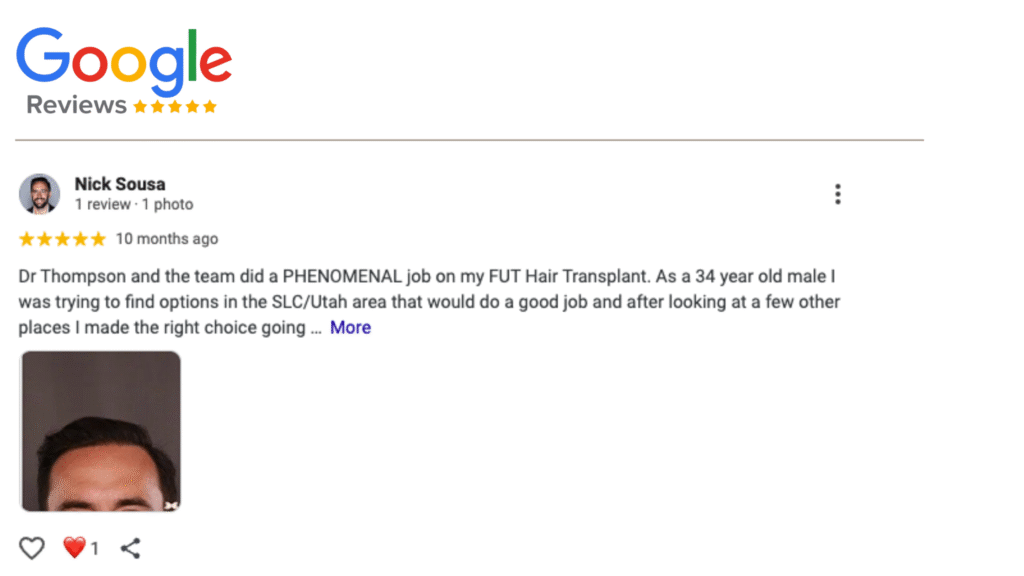Deciding to undergo a hair transplant can feel like stepping into uncharted territory. With countless options available, it’s easy to feel overwhelmed when searching for the right place or surgeon to help you regain your confidence. After all, this procedure is about more than just aesthetics; it’s an investment in yourself. That’s why it’s crucial to know what to look for in a qualified professional. In this article, we’ll break down essential tips from experts on how to choose the best surgeon for your hair transplant, making sure you have the information you need to make a well-informed decision. Let’s dive right in!
It is generally advisable to choose a U.S. specialist surgeon for hair transplants rather than a chain company or going abroad, as American specialists often provide the best personalized care and have extensive experience specific to hair restoration.
You should seek a licensed surgeon with extensive experience in hair transplant procedures, prioritizing those with proven track records and positive patient outcomes. It’s essential to choose a surgeon who takes the time to discuss your specific needs, avoids aggressive sales tactics, and allows you to communicate with previous patients for credible insights.
Take Utah Facial Plastics, for instance, here our board-certified facial plastic surgeons are nationally recognized experts in hair restoration with years of focused experience performing both FUE and FUT transplants. We offer personalized consultations, transparent guidance, and natural-looking results backed by hundreds of successful cases. With dedicated hair restoration suites at our Layton and Draper locations, and a team trained in the latest technologies like NeoGraft, patients receive the highest standard of care in a setting designed for safety, comfort, and discretion. If you have questions about these types of procedures, give us a call at 801.849.8140. We’d be happy to answer all of your questions.
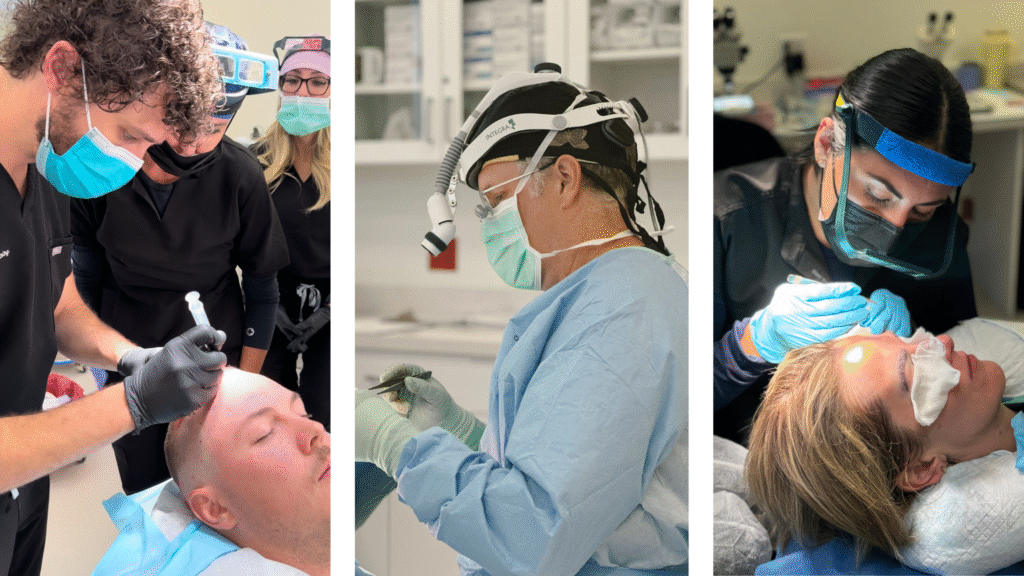
Qualified Surgeons for Hair Transplants
When it comes to hair transplants, the importance of choosing a qualified surgeon cannot be overstated. A surgeon with specialized training not only knows the ins and outs of hair restoration techniques but also helps maximize your chances of satisfactory results. Ideally, you’ll want to seek out professionals who have completed post-graduate training in plastic surgery or dermatology, followed by additional education specifically in hair restoration. Most reputable surgeons have invested up to seven years honing their craft after medical school to ensure they possess the skills necessary for this intricate procedure.
Certification can serve as a valuable green light when considering a surgeon for your hair transplant. While anyone can claim expertise, look for those accredited by reliable boards like the American Board of Hair Restoration Surgery (ABHRS). Achieving certification from such institutions means the surgeon has committed to rigorous training and passed stringent evaluations, ensuring they adhere to high standards of practice that prioritize patient safety and procedural efficacy.
Accreditation from recognized bodies acts as a safety net for patients navigating the often murky waters of hair restoration surgery.
Additionally, experience plays an invaluable role in determining a surgeon’s ability to deliver successful outcomes. This isn’t about just logging hours but rather focusing on specific types of surgeries that align with your needs. For instance, some surgeons specialize in Follicular Unit Extraction (FUE), while others may excel in Follicular Unit Transplantation (FUT), each technique requiring different expertise. Thus, it’s crucial to investigate a surgeon’s background thoroughly — this includes reviewing online testimonials and scrutinizing before-and-after photos of previous patients.
While you might find a doctor with impressive credentials, understanding the regulatory landscape is equally critical in this field.
Currently, there are no strict laws governing who can perform hair transplants, which is where consumers need to proceed with caution. It is essential to be aware of practices where unlicensed technicians may conduct procedures instead of licensed doctors. This predominantly occurs in hastily established clinics focused more on volume than patient care. To avoid potential pitfalls, make use of resources such as the American Hair Loss Association (AHLA) and the International Society of Hair Restoration Surgery (ISHRS). These organizations can direct you toward certified professionals and help you navigate away from those less scrupulous practices.
For example at Utah Facial Plastics, our double-board certified surgeon, Dr. K. Thompson, and plastic surgeon, Dr. James P. Manning are International Society of Hair Restoration Surgery. This is a highly respected fellowship training. Their expertise ensures each procedure is tailored to the individual, with a focus on achieving natural-looking, long-lasting results. Patients can feel confident knowing they’re in the hands of nationally recognized leaders in the field of hair restoration, and you should be too!
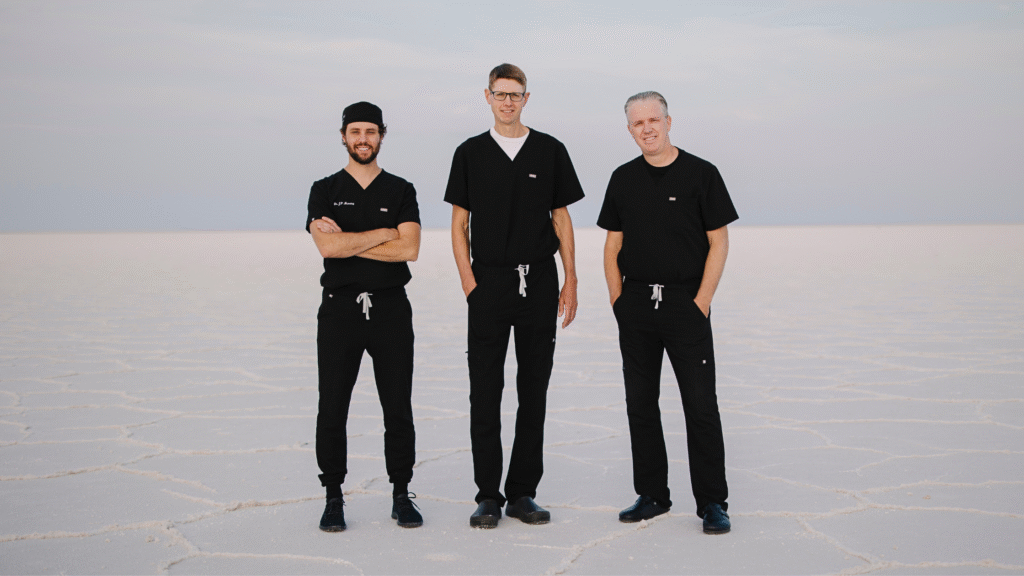
Credentials and Expertise
When searching for the right hair transplant surgeon, it’s essential to thoroughly understand their credentials. A reputable surgeon should hold a medical degree with specialization in dermatology, plastic surgery, or another related field. This educational background serves as the groundwork for understanding the intricate anatomy of hair follicles and skin, which is fundamental to performing successful hair restoration procedures.
Beyond just obtaining a medical degree, specialized training in hair restoration is vital. Surgeons who invest time in advanced courses and fellowships dedicated specifically to hair restoration showcase their commitment to mastering this art. This additional training equips them with cutting-edge techniques and knowledge that can significantly enhance results for patients. Think of it this way: would you trust a gardener who has only studied general botany versus one who specializes in cultivating roses? The same principle applies here; specialization makes all the difference.
Nurturing expertise does not stop at formal education; experience plays a critical role as well.
Experience is paramount. It’s not enough for a surgeon just to hold the right qualifications; they must also have an extensive track record of successfully performed procedures. An experienced surgeon will have encountered various types of cases and challenges that sharpen their skills over time. It’s beneficial for patients to ask potential surgeons about their number of procedures performed and specific case types within hair restoration.
Data shows that surgeons with over five years of specialized experience increase patient satisfaction rates significantly due to refined techniques and improved outcomes. For instance, those who have tackled diverse hair loss patterns tend to develop tailored approaches that can make procedure results even more favorable.
As you evaluate potential candidates for your procedure, keep in mind that both credentials and experience are crucial elements in ensuring that you receive top-notch care tailored to your unique needs.
At Utah Facial Plastics, our hair restoration surgeons bring together double board certifications, ISHRS fellowship training, and decades of combined experience focused exclusively on the face, scalp, and hair. This level of specialization allows us to deliver consistently natural, long-lasting results. Patients benefit not only from our advanced training, but also from the kind of surgical precision that only comes from performing thousands of successful procedures. You can learn more about our patients’ experiences here on our Reviews & Testimonials page.
Research and Evaluate Surgeons
Undertaking the journey of a hair transplant requires diligent research and intuitive evaluation to ensure you choose the right surgeon. Start by seeking online reviews on healthcare platforms like RealSelf, Trustpilot or Google. These reviews often reflect real patient experiences and satisfaction rates, giving you insight into outcomes as well as the overall experience within the clinic. Look for patterns in reviews that mention strengths such as surgical skills, compassion from staff, and post-operative care.
At Utah Facial Plastics, patient satisfaction is at the core of everything we do, and it’s reflected in our hundreds of 5-star reviews across Google, RealSelf, and other platforms. From the first consultation to post-surgical follow-ups, patients frequently highlight our team’s attentive care, natural-looking results, and the confidence they’ve regained through the process. Taking the time to read real stories and testimonials from those who’ve already walked this path can offer powerful reassurance as you make your decision.
Before-and-After Photos
Additionally, examining before and after photos provided by the clinics is crucial. It’s one thing to hear terms like “natural-looking” or “successful results,” but seeing tangible evidence is another ballgame. Pay close attention to the quality and clarity of these images—can you see how the hairline has been crafted? Do the results look harmonious with the patient’s features? Clinics showcasing a diverse range of successful transplants usually indicate expertise and adaptability.
Equally important are patient testimonials, which add authenticity to your research. Past patients may share their personal stories through videos or written accounts, detailing their entire experience. These narratives often convey emotions that raw data cannot capture; they might outline feelings throughout the process—from initial consultation to post-surgery recovery—which can provide invaluable perspective while assessing potential surgeons.
After understanding what others are saying online, it’s time to evaluate credentials directly with an in-person visit.
During consultations with your selected specialists, don’t hesitate to ask probing questions about their portfolios. A good surgeon should have an extensive collection of successful transplant cases that resonate with your desired outcome. Ask if they have experience with specific techniques like Follicular Unit Excision (FUE) versus Follicular Unit Transplant (FUT), especially if you have preferences based on your hair loss pattern or lifestyle choices. The more tailored your conversation feels, the more confidence you’ll have in their ability to meet your needs.
Combining online insights with careful face-to-face evaluations will empower you to make an informed choice regarding your hair restoration process. It’s essential to focus on this part of your journey; achieving natural-looking hair relies on a partnership between patient and surgeon, built on trust and clear communication.
To help visualize what’s possible, here are some before-and-after photos from real patients at the UFP Hair Restoration Center in Salt Lake City, Utah. These images reflect the precision, artistry, and natural outcomes achieved by our fellowship-trained surgeons, and they serve as powerful evidence of what expert care can deliver.
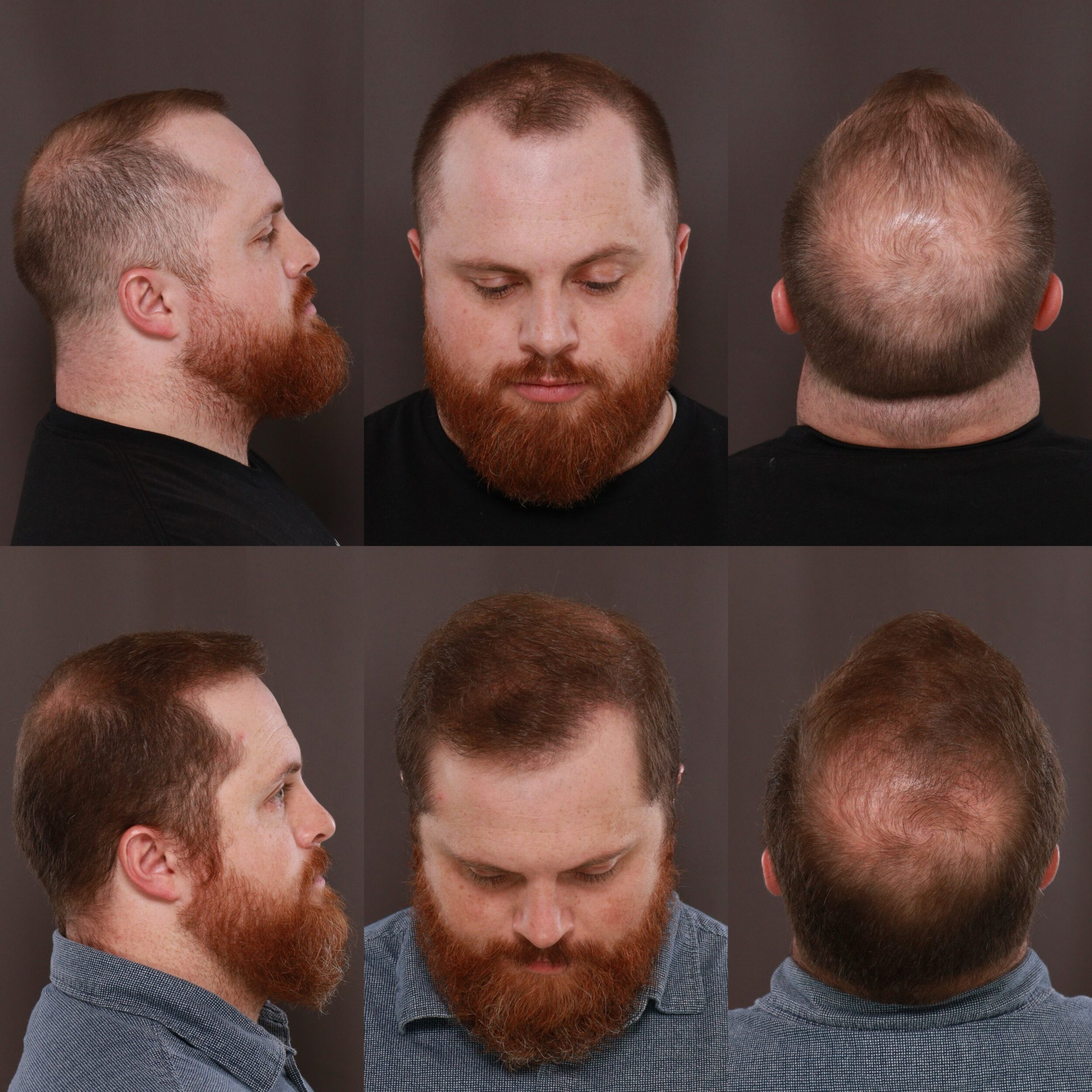
The Consultation Process
At this initial meeting, it’s vital to have an open dialogue with your surgeon. Expect them to conduct a thorough evaluation of your hair loss, using the Norwood scale as a reference point for categorizing your specific type of hair loss. This involves digging deeper into your medical history to identify any previous treatments or underlying conditions that might affect the transplant’s success.
During this time, the surgeon should engage you in conversations about your expectations. What do you envision for your new hairline? Do you have specific styles in mind? Your goals should align clearly with what is medically possible. Unrealistic expectations can lead to disappointment down the line. If you’ve been dreaming of a flowing mane similar to a celebrity, it’s essential that your surgeon helps you understand whether that’s feasible based on your unique characteristics and limitations.
After discussing your personal desires and assessing your individual case, it’s important for the surgeon to explain the actual process of the transplant comprehensively.
They should detail different techniques such as Follicular Unit Extraction (FUE) and Follicular Unit Transplantation (FUT), including how each method works and their respective pros and cons. For instance, FUE uses small punches to extract individual follicles, resulting in minimal scarring—great if you want to wear shorter hairstyles. In contrast, FUT involves removing a strip of scalp tissue that leaves behind a single scar but may allow for more grafts to be harvested at once.
Transparency during this discussion is paramount. Your surgeon should be prepared to answer all manner of questions concerning the transplantation technique, recovery times, expected hair growth timelines, and potential side effects. Unanswered questions can lead to anxiety about the procedure. Remember, no question is too small; if it weighs on your mind, it deserves an answer.
That depth of engagement lays a solid foundation for trust between you and your surgeon. This rapport not only benefits peace of mind but can also significantly influence the overall success of your hair transplant experience. When you trust your surgeon, you’re more likely to follow post-operative guidelines closely and have realistic expectations throughout your journey.
A successful consultation sets the tone for effective collaboration between patient and surgeon—a partnership that thrives on clear communication and understanding of both parties’ goals. Preparing well, asking questions, and listening carefully will make all the difference in achieving the results you’ve always wanted.
At Utah Facial Plastics, our consultations are intentionally designed to be informative, personalized, and pressure-free. Whether you’re exploring hair restoration for the first time or comparing treatment options, our team ensures you walk away with a clear understanding of what’s possible—and what’s best for your unique needs. This is the kind of thoughtful, expert-led guidance you should expect wherever you go. Contact us to schedule a hair restoration consultation or call 801.849.8140.
Ensuring Health and Safety
The safety standards of the clinic where your hair transplant surgery takes place cannot be undervalued. It’s not just about aesthetics; ensuring a safe environment directly contributes to the procedure’s success. Ideally, the clinic should demonstrate adherence to rigorous health protocols as outlined by authoritative entities like the FDA or corresponding organizations pertinent to your location. This ensures they operate under industry best practices that prioritize patient well-being.
At UFP Hair Restoration in Layton, UT, we’ve taken these standards a step further by creating a dedicated Hair Restoration Surgical Suite exclusively for our transplant patients. This private, state-of-the-art space is designed to meet the highest levels of sterility, comfort, and efficiency—allowing our team to perform procedures with exceptional precision while ensuring patient safety remains the top priority. Having a dedicated surgical suite reflects our commitment to excellence at every step of the hair restoration journey.
No matter where you’re located, this is the level of safety, specialization, and surgical environment you should expect when considering a hair transplant. Choosing a facility that prioritizes your health is just as important as the aesthetic outcome.
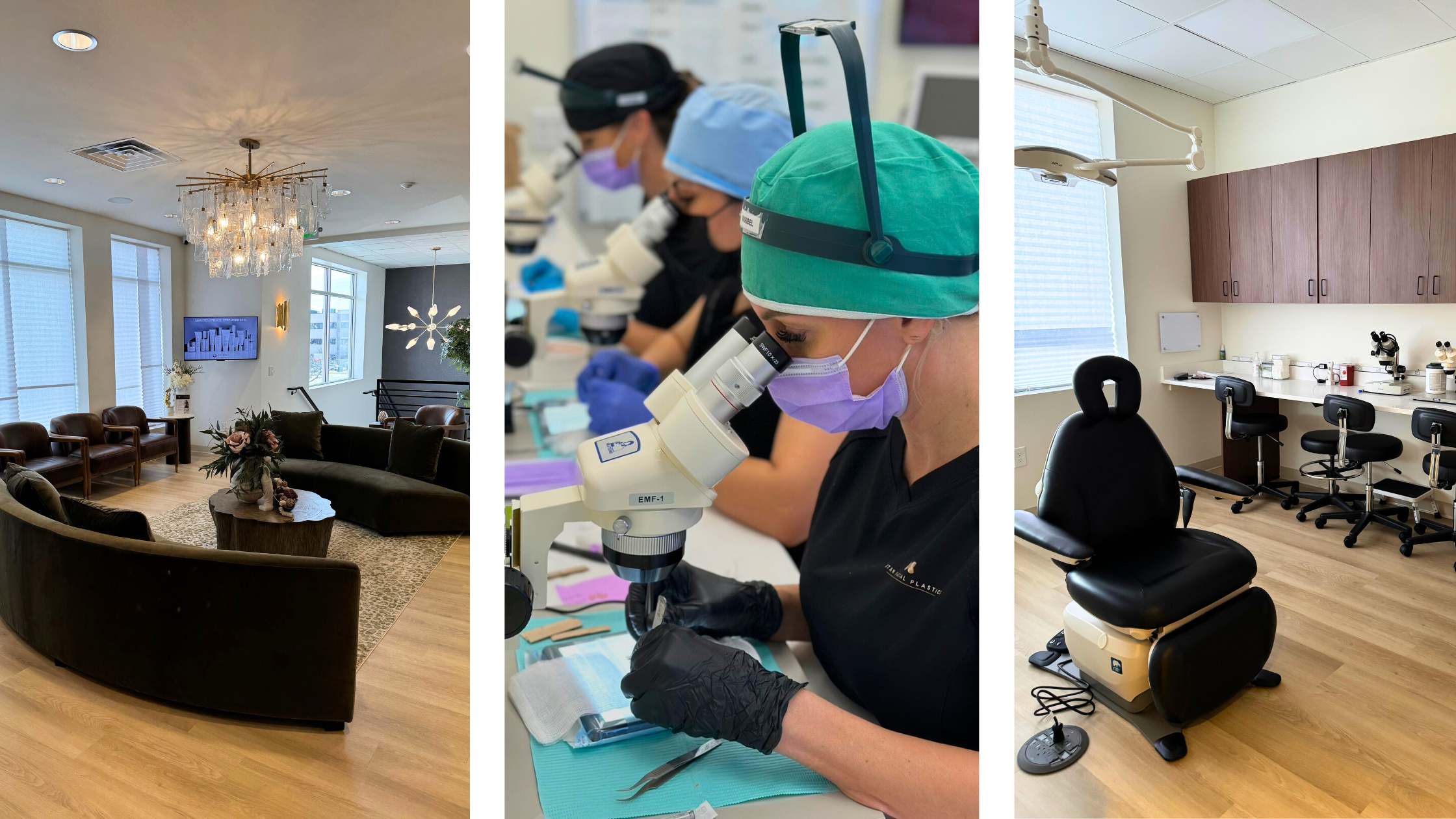 The safety standards of the clinic where your hair transplant surgery takes place cannot be undervalued. It’s not just about aesthetics; ensuring a safe environment directly contributes to the procedure’s success. Ideally, the clinic should demonstrate adherence to rigorous health protocols as outlined by authoritative entities like the FDA or corresponding organizations pertinent to your location. This ensures they operate under industry best practices that prioritize patient well-being.
The safety standards of the clinic where your hair transplant surgery takes place cannot be undervalued. It’s not just about aesthetics; ensuring a safe environment directly contributes to the procedure’s success. Ideally, the clinic should demonstrate adherence to rigorous health protocols as outlined by authoritative entities like the FDA or corresponding organizations pertinent to your location. This ensures they operate under industry best practices that prioritize patient well-being.
A critical aspect of health safety lies in maintaining a sterile environment. In any surgical context, infection prevention is paramount; therefore, clinics must utilize high-level disinfectants and processes for all tools and working surfaces. When visiting potential clinics, observe their level of cleanliness and ask pointed questions about their sterilization procedures. You’d want to know if they use disposable instruments when possible or if all reusable surgical tools undergo thorough autoclaving—this is essential for eliminating harmful bacteria and viruses.
Remember that even with perfected techniques, complications can arise during any surgical procedure. Thus, it’s wise to ensure that your chosen clinic is well-equipped with emergency care facilities. Inquiring whether they have immediate access to medical equipment and staff trained in emergency procedures can provide peace of mind as you prepare for your transplant.
But how do you assess all these points effectively? One straightforward way is by asking about routine health checks conducted on staff members. Imagine you’re at the consult: don’t hesitate to inquire how often the surgical team undergoes screenings for infectious diseases or whether they complete specific training on hygiene practices.
Think about this: you wouldn’t trust a restaurant with poor sanitation practices when you dine out. Similarly, choosing a clinic based on visible safety commitments and procedural transparency can be just as critical when considering who will handle your hair transplant. Knowing the right questions to ask empowers you, ensuring confidence in your choice while prioritizing your health above all else.
Specific Specialists vs. General Practitioners
When it comes to hair transplant surgery, the choice between a specialized surgeon and a general practitioner can significantly impact your outcome. While general practitioners possess broad medical knowledge, they may lack extensive training in the intricate details of hair restoration techniques.
Specialized surgeons dedicate years honing their skills in this field, ensuring that every aspect of the procedure—from follicle extraction to hairline design—is mastered.
Specialized surgeons frequently engage in ongoing education—attending conferences, workshops, and contributing to research focused solely on hair restoration. This relentless pursuit of knowledge keeps them abreast of the latest techniques and innovations, allowing them to provide patients with state-of-the-art solutions tailored specifically to their needs.
Expertise Level: Trained and Licensed
A licensed surgeon has effectively demonstrated their expertise through rigorous training and hands-on experience. To become licensed, surgeons must complete extensive education, including years in medical school followed by residency programs focused on their specialty. It’s crucial that the surgeon has completed additional training in hair transplant techniques to ensure they understand not only how the procedure works but also the nuances that can make a significant difference in results.
When researching potential surgeons, verify their licensing credentials; this step cannot be understated. Look for certifications from recognized boards in dermatology or plastic surgery. These certifications confirm that your chosen surgeon meets the high standards set within their field.
Additionally, consider the number of procedures a surgeon performs annually. More experienced professionals statistically yield higher success rates. Research shows that surgeons who perform over 500 hair transplants each year have better patient satisfaction rates compared to those with significantly fewer procedures under their belts.
Why Experience Matters
The nature of hair transplant surgery is delicate and requires not only technical skill but artistic sensibility. As you navigate these choices, remember that a well-trained and licensed expert will prioritize patient safety while crafting individualized solutions that best meet your hair restoration needs. Choosing the right surgeon is vital for a successful hair transplant experience. By focusing on qualifications, experience, and proven results, you lay the foundation for achieving the desired outcome in your journey towards renewed confidence.
At UFP Hair Restoration, our surgical team is composed of fellowship-trained, double board-certified facial plastic surgeons with extensive experience performing both FUT and FUE procedures. Their technical skill and artistic precision are supported by a world-class clinical team led by Julie Pepper, our Hair Clinic Director. With over 20 years at UFP, Julie brings a deep understanding of the hair restoration process from start to finish. Her journey from medical assistant to lead hair restoration technician, paired with her certifications in phlebotomy and surgical assisting, ensures every patient receives exceptional care—from the first consultation to the final follow-up.
Wherever you choose to have your procedure, make sure you’re working with a team whose expertise runs deep—because outstanding outcomes depend on more than just a surgeon; they rely on an entire team committed to your success.
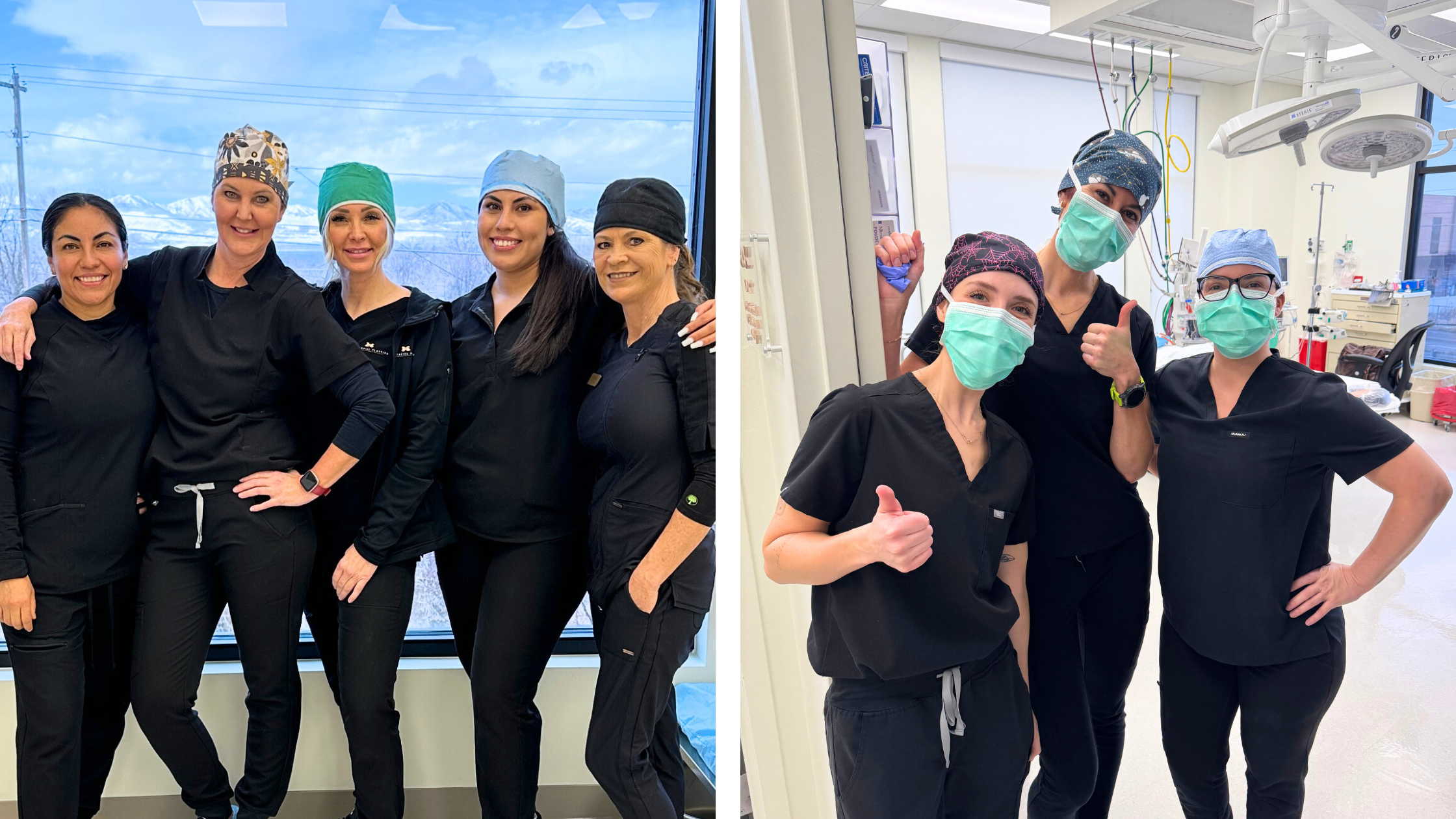
Additional Resources
- The Advantages and Disadvantages of Hair Transplant Surgery
- Who Is An Ideal Candidate for the Strip Method or FUT?
- Shock Loss After Hair Transplants
- Should I Go to Turkey for a Hair Transplant?
- Hair Transplants Actually Look Good Now
- How Long Does It Take for Hair Transplant to Grow?
- Pros & Cons of Traveling Abroad for Hair Transplant Surgery
- Hair Transplant Technicians: The Importance of Expertise in Your Surgery
If you are someone who is considering a hair transplant, UFP Hair Restoration offers excellent options.
Contact us to schedule a hair restoration consultation or call 801.849.8140.
